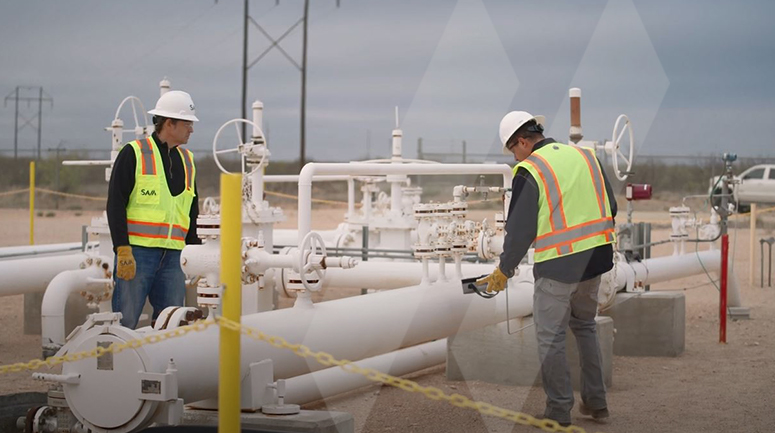PIGs, Pipelines, and Logistical Realities of PHMSA Mandates
| Bob Williams

The recent federal mandates outlining timelines for gas and liquid pipeline integrity monitoring have likely raised some concerns for pipeline operators. While the final rules provide time to meet requirements, inside and outside forces, largely around industry resources, could cause some hiccups.
In September 2019, the Pipeline and Hazardous Materials Safety Administration (PHMSA) published the “Mega Rule” amending the federal pipeline safety regulation under 49 CFR Part 195. Key in that amendment is the expansion of integrity management requirements for gas transmission lines and hazardous liquid pipelines, specifically the role of instrumented internal inspection devices, or inline inspection (ILI) tools aka pipeline inspection gauges (PIGs).
Where in the past operators only had to use PIGs on high consequence area (HCA) transmission pipelines, now even those outside of HCAs must be run with ILIs.
These requirements will apply to pipe segments exhibiting a maximum allowable operating pressure (MAOP) of greater than or equal to 30% of the specified minimum yield strength (SMYS) that are present in Class 3 or 4 locations or in MCAs that also can accommodate an ILI tool, and that are not already part of existing HCAs. The rule requires transmission operators to perform initial assessments on all pipeline segments no later than July 3, 2034.
Barriers to Resolution
The challenge with meeting these requirements is threefold: the probability of unpiggable pipelines, ILI supply and demand, and workforce shortages.
With the new mandates for piggable lines extending beyond HCAs, many operators will be faced with unpiggable lines which might be physical, such as tight bends, multi-diameters, and plug valves or operational such as low/no flow or inability to interrupt supply. Smart PIGs are an expensive piece of equipment and can potentially get stuck or lost in the pipeline, which not only puts the equipment at risk, but it can also stop the product flow until the PIG is located and released.
On top of that, there aren’t that many smart PIGs available for all the pipelines that will likely have to be evaluated. Smart PIGs are typically equipped with deformation sensors, magnets to detect magnetic flux leakage (MFL) for corrosion, and/or ultrasonic technologies to identify longitudinal cracks in steel pipelines. These intelligent devices have several advantages over conventional pigging including higher accuracy, no interruption in pipeline operations, and multi-operational characteristics.
Finally, personnel that work on pipelines are highly trained and certified to run PIGs in rights-of-way and recognize abnormal operating conditions. Similar to other construction-related market segments, there is a workforce shortage. Operators are scrambling to figure out where to get money to pay for pigging and then get pipeline assessments scheduled.
The average cost of running a PIG is $35,000 per mile. But running the PIG is only the first step. The pipeline must be segmented in such a way as to accurately pinpoint problems. It’s especially important for survey teams to precisely locate issues as excavations for repairs can range from $25,000-$50,000.
The Data Driver
Pigging lines is more than just finding threats—it’s also location, location, location.
Prior to contracting a pigging operation, know your operational constraints such as pressures, up and down hills, increased speed and decreased speed, the location of butterfly valves as well as other pipeline assets that may hinder the operation.
The ability to pinpoint PIG location and issues is essential, so understand how your contractor tracks and gathers data.
The ability to produce precise geospatial accuracy of ILI indications allows pipeline operators to promptly respond to immediate, 60-day and 180-day repair conditions. In all cases, operators must notify PHMSA (or PHMSA’s State partner agencies, depending on jurisdiction) and take additional mitigating action in the event the repair cannot be completed within the described deadlines. Data accuracy allows for prompt scheduling and proper responses of operations to address repairs as indicated resulting in management of resources while maintaining operational budgets.
Of course, your contractor should be able to map and track the movements of the PIG in the pipeline. The cost of smart PIGs can exceed $5 million —if they get stuck, you need to be able to find and recover them quickly and again, not just due to the equipment cost, but because the halt in production and revenue for the operators until the PIG is found and extracted can be catastrophic.
To streamline and automate tracking, SAM developed a proprietary mapping technology to display PIG movement in real-time. Sensors attached to the PIG provide critical information on its speed and location automatically updating on our servers and made accessible on any laptop or mobile device for our clients.
Watch our video about how SAM applies innovative technology to track PIG movement during inspections saving our clients time and money.
Bob Williams
Bob Williams has over 35 years of business development and operational experience in geomatics, with a focused concentration in Aerial Mapping & Remote Sensing.
View Profile
